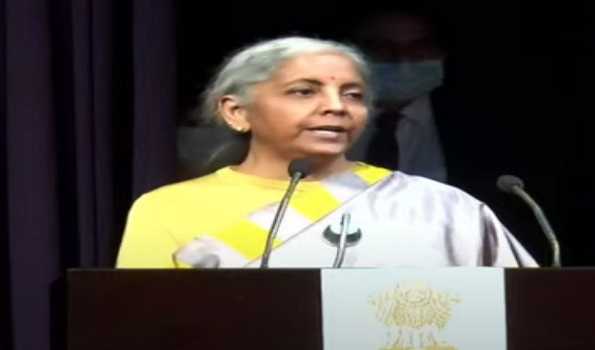
Jammu, Nov 23: Stating that Jammu and Kashmir is rapidly passing through developmental phase, Union Finance Minister Nirmala Sitharaman on Tuesday said that economy of Jammu and Kashmir will be doubled in next few years.
“The development is reaching to all sectors and in a transparent manner,” the Finance Minister said while addressing the Financial Inclusion and Credit Outreach program, here at University of Jammu.
She said that economy of Jammu and Kashmir will be doubled in next few years as the region is rapidly passing through the development phase.
She also said that the projects which were earlier stalled are being completed and communities deprived of benefits are now being benefited.
All social security schemes introduced by the Centre are reaching to the people.
“Had good interactions with women entrepreneurs in Kashmir on Monday, which was very inspiring,” said the Finance Minister.
She said that the development of J&K in every aspect is taking place and the World Bank is pooling through an agency for development of this region.
“We ensure that more public sector banks come in J&K so that a healthy credit outreach can be given,” she added.






